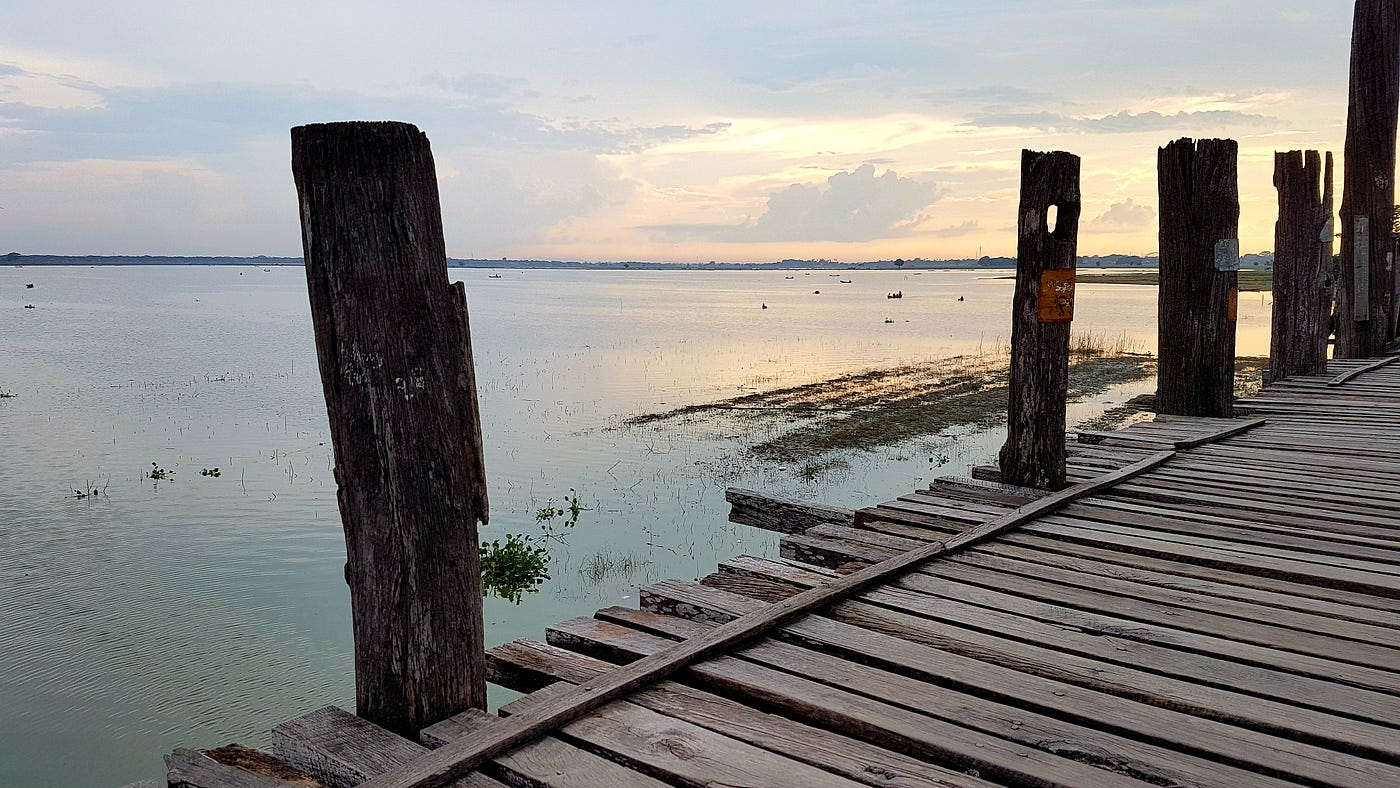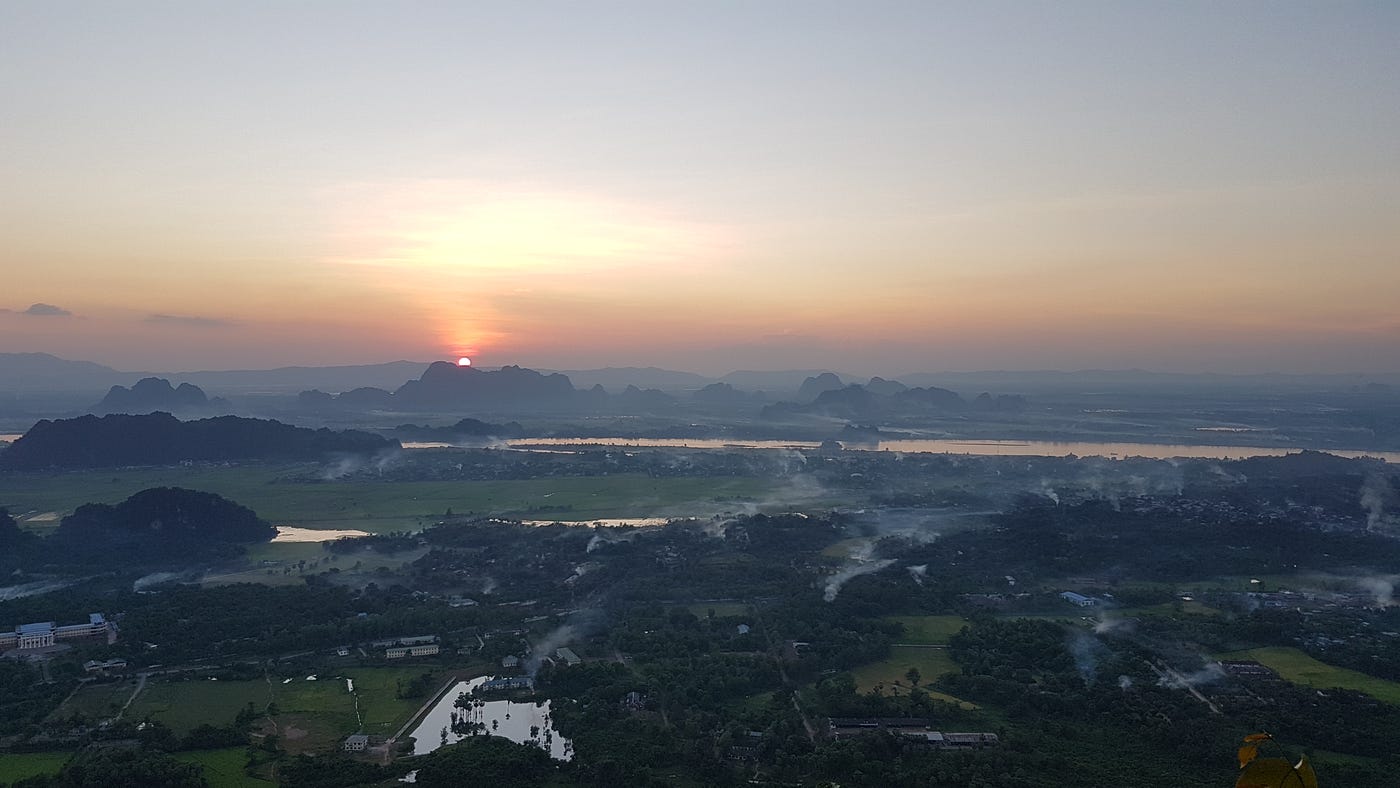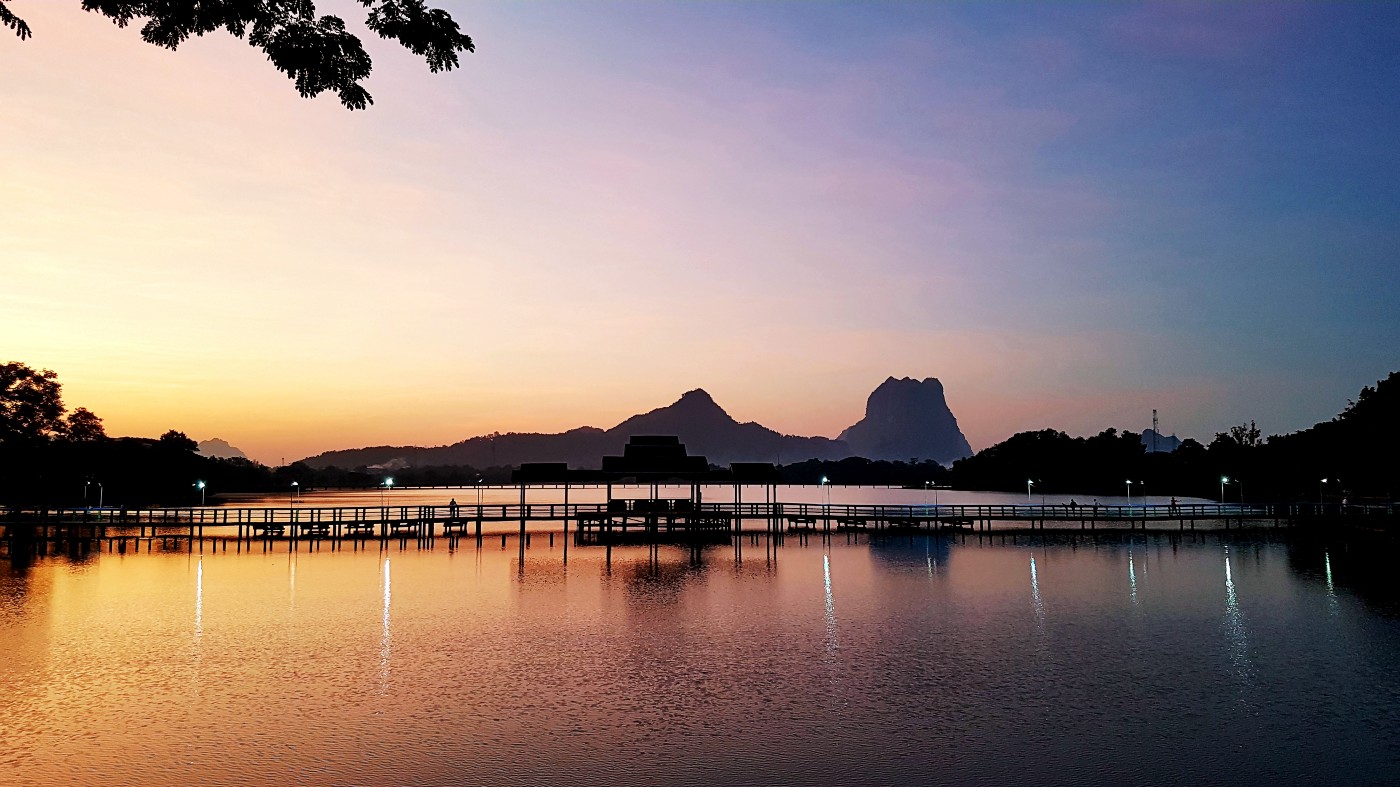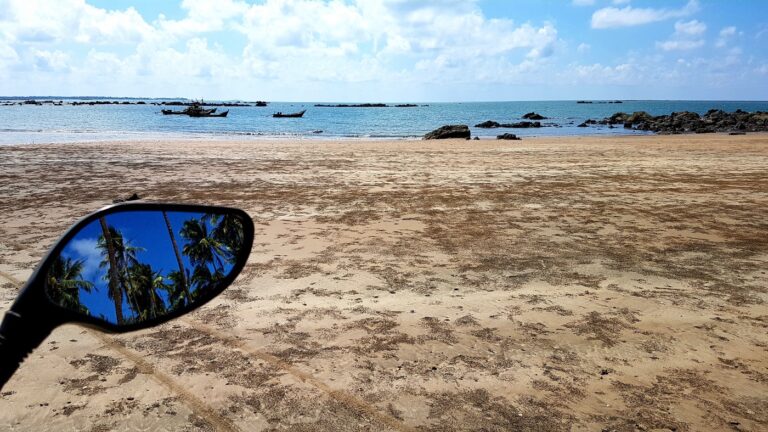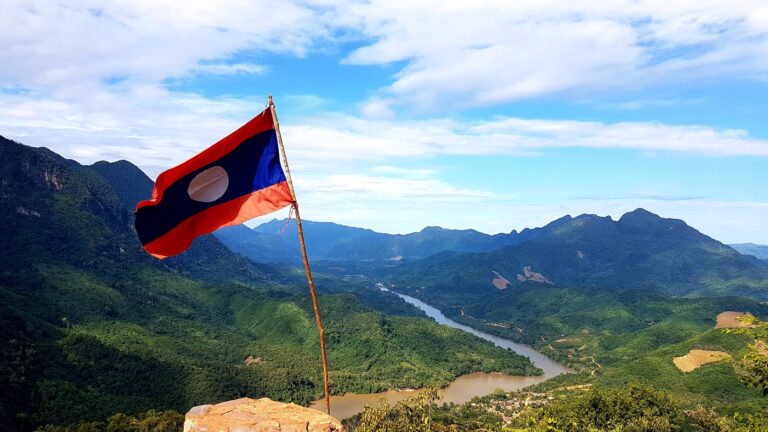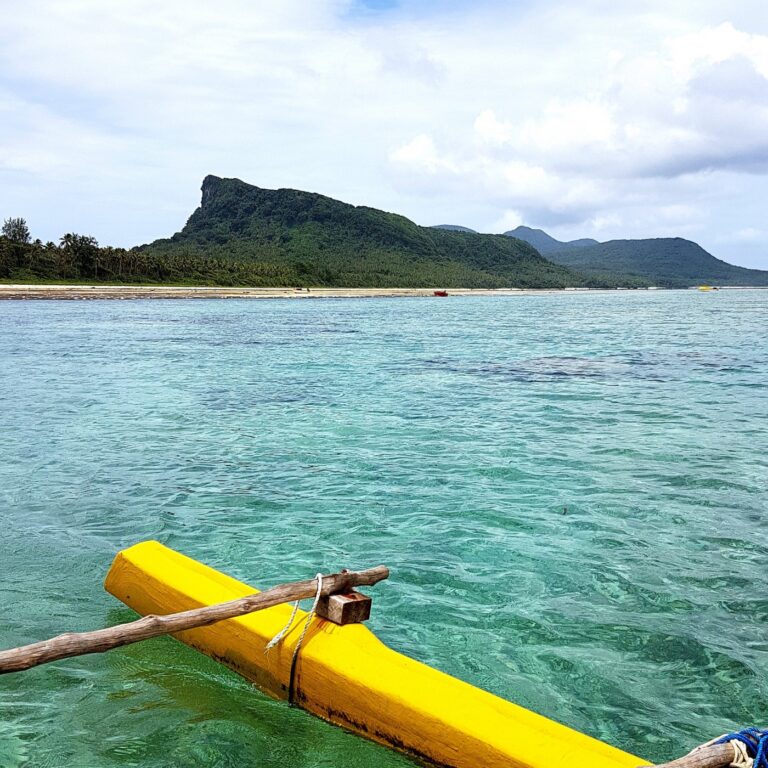(originally posted on Medium on Nov 12, 2019)
Impressions after one month of travel
Tavel in Myanmar is easy. Though, I wouldn’t recommend a novice traveller to start in Myanmar. Yet, a lot is similar to other southeast asian countries. Someone who has already experienced one of those other countries will find their way around in Myanmar.
Regarding what to do and where, like all travellers we were faced with the trade off to design a travel itinery that is easy — on paths heavily travelled — and off the beaten path, but which are thus more difficult to find information for. Our compromise brought us fom Yango to Ngweshaun to Bagan to Mandalay to Hsipaw to Lake Inle to Hpa-An.
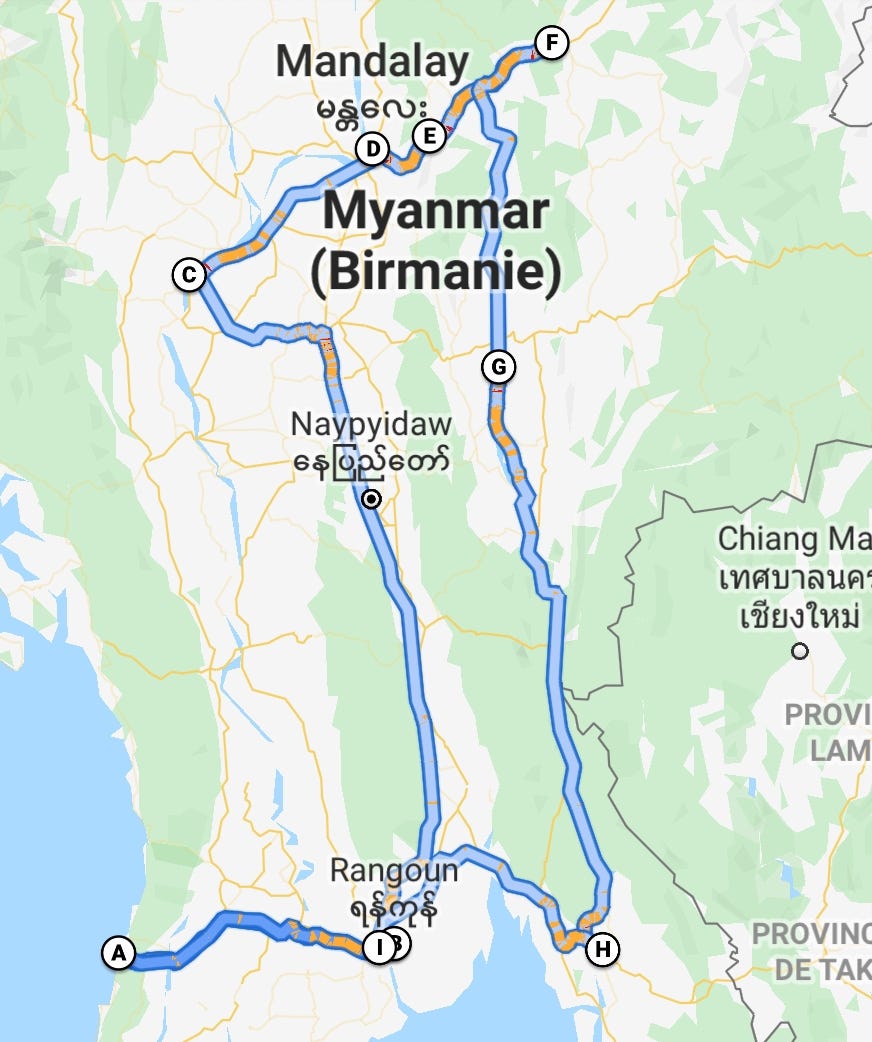
In more detail, we went to:
- Yangon
- Ngwesaung Beach
* Chaungtha Beach
(see travel report on the scooter ride along the beach) - (back to Yangon)
- Bagan
- Mandalay
* Amarapura
* Ava
* Sagaign - Pyin Oo Lwin (Maymyo)
- (train ride over Gokteik train bridge)
- Hsipaw (pronounced “Si-Po”)
- Lake Inle (Nyaung Shwe)
- Hap-an
- (back to Yangon, and fly out)
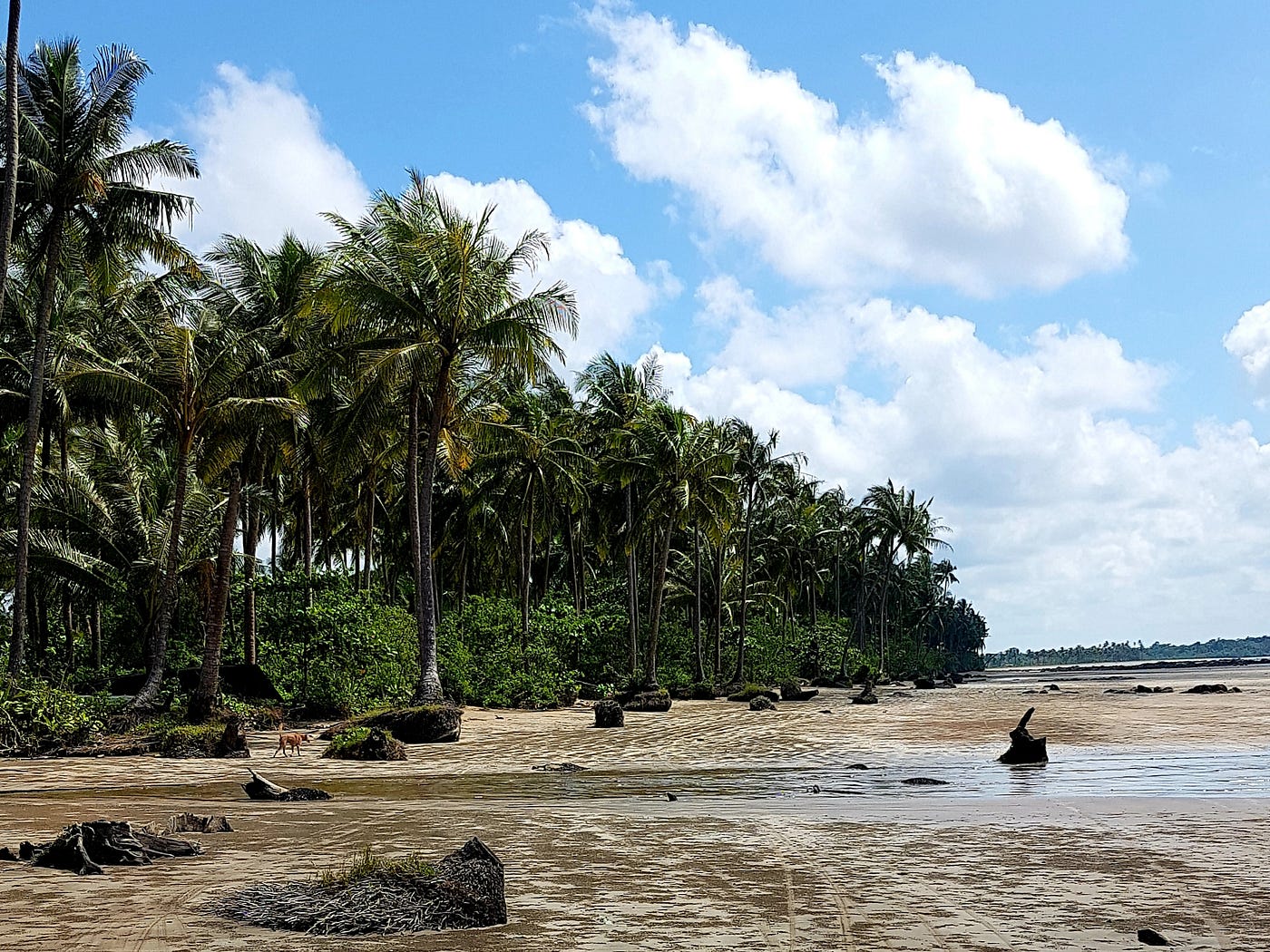

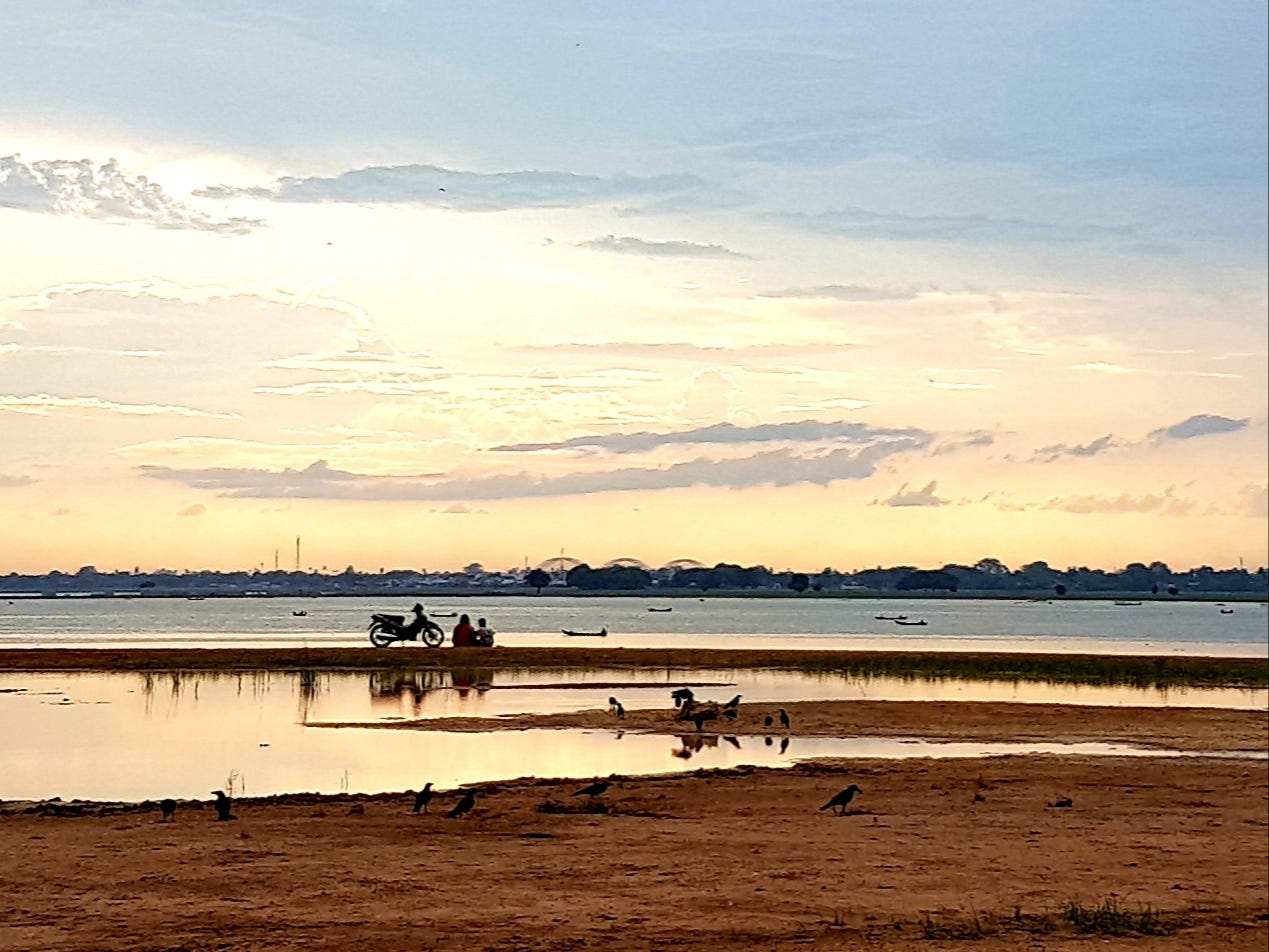
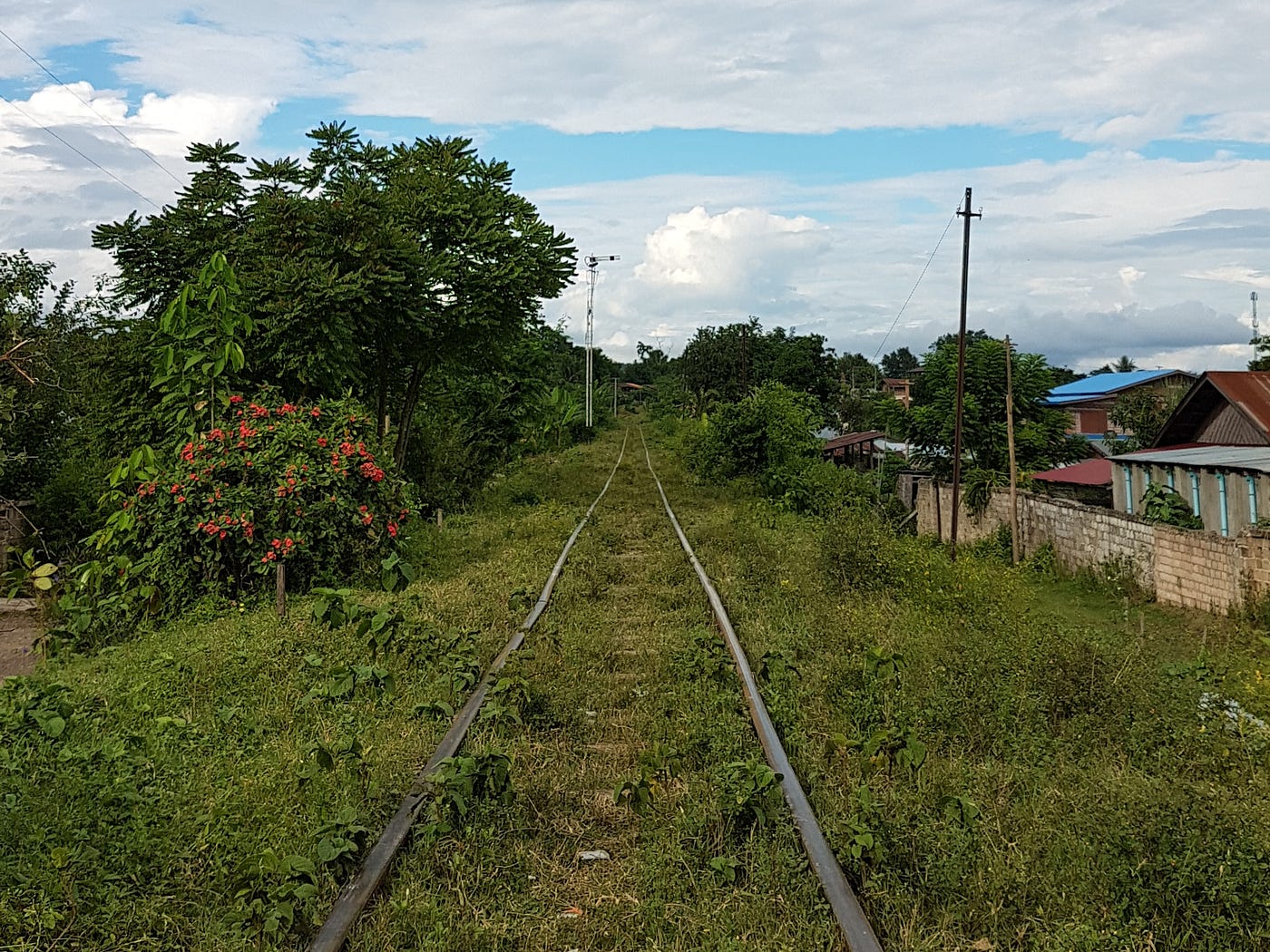
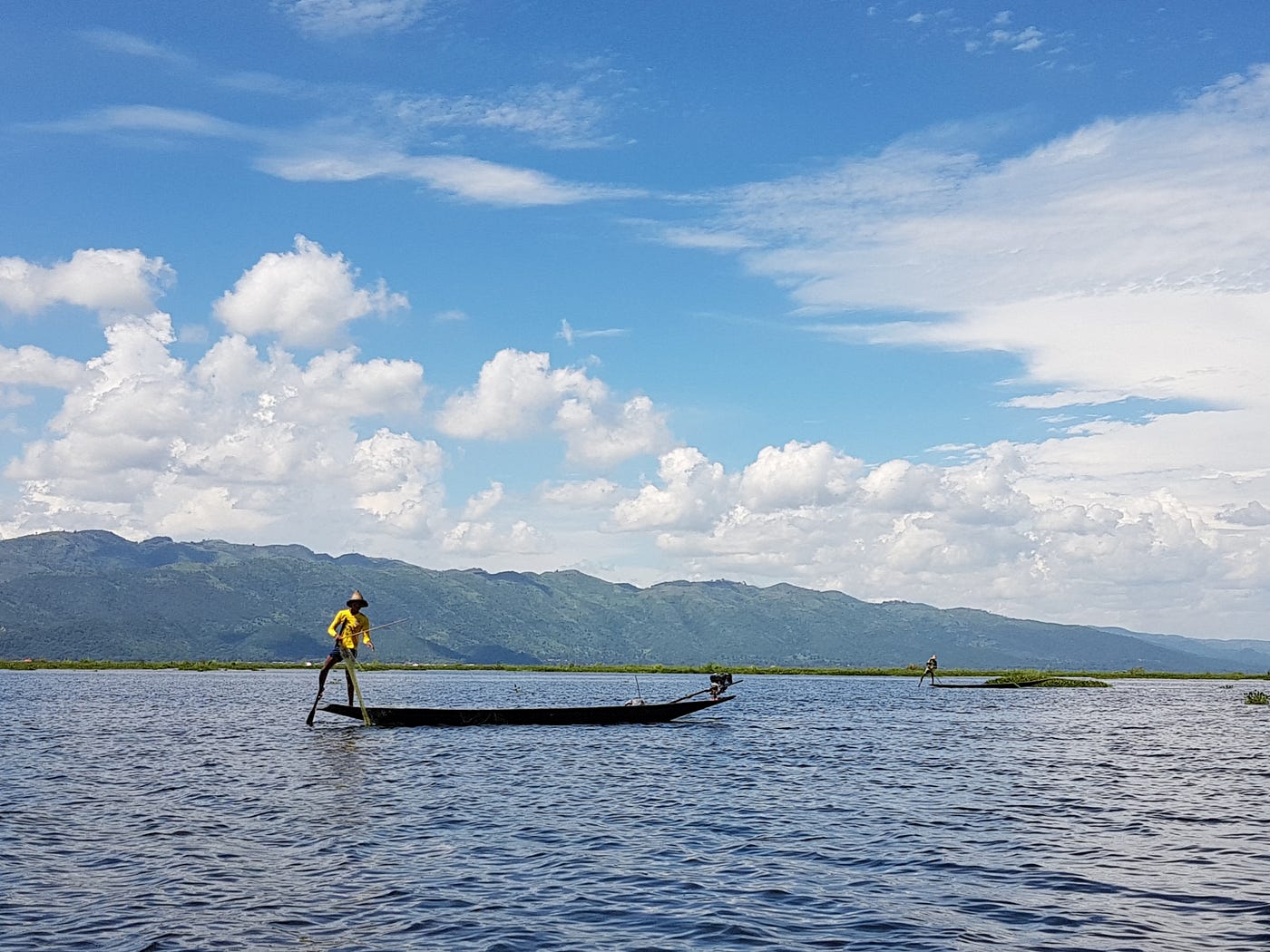




Considered but left out:
Mrauk U. Looks good, but to get there one has to either take a domestic flight (beyond our budget) or survive a 16h busride over bumpy mountain roads.
Golden rock at Kyaiktiyo. Too expensive and generally too cumbersome to get there. It feels like Myanmar tries to incentivize foreign tourists to leave this place to the locals. And we respect this incentive.
Prices
At the time of our travel the exchange rate was about 1 USD = 1500 MMK.
Usually the prices were written down and they applied for locals and tourists alike. There was no need to negotiage the prices.
To get a feel about the price level in Myanmar, here a selected list of what some everyday items/services costed
- SIM card with 4GB internet: 7000 MMK (at airport)
- tea/coffee: 300-500 MMK per cup
- dinner: ~2500 MMK per person
- banana: 100-200 MMK per single piece
- beer in luxory resort: 3500 MMK
- beer regular price: 2500 MMK
- bicycle: 1500 – 2500 MMK per person per day
- E-bike (Bagan): 7000 MMK per day for 2 people (would have been 5000 MMK if for only 1 person)
- Scooter: 8000 MMK (Hpa-An) – 15000 MMK (Mandalay)
- Accommodation: possible to have a decent room with breakfast for $8-$10 (i.e. 12000-15000MMK)
In one month of travel through Myanmar we have spent approximately $1000 for two. This was significantly less than what we had expected. We didn’t deprive ourselves from anything in an attempt to save as much as possible (again, we’ve budgeted clearly more).
Looking back on how we ended up so much below budget: we generally didn’t drink a lot of alcohol, we ate mostly street food, and sufficed ourselves with the lowest priced online bookable accommodation.

Important phrases
Min-ga-la-ba: hello (general greeting)
Tshi-su-ba: thanks (informal)
Tshi-su-timbare: thank you (formal)
Tshi-su-amiaji-timbare: thank you very much
Food
For us, the food was one of the highlights of this country. I don’t remember where (and whether at all) I have eaten equally as good before. But then again that’s just personal taste. For example, Myanmar food is heavy on garlic, onion, and peanuts. Someone who doesn’t like these basic ingredients won’t get happy in Myanmar. The food is generally not spicy, they put the chili (and spices alike) as side dish.
I have often heard stories about places where one can eat for less than $1 per meal. But thus far I could never confirm something like this. To me, there is something special about getting a meal for under $1; though I cannot put it in words.
Usually, the price clocks in above this $1 mark. In those situations, I find it difficult to believe that locals indeed also pay so much — at the same time, as tourist I likely only find what would be considered special for locals; which they wouldn’t eat more frequent than, like, once a week… Or, it is because I eat food prepared “for tourists”, which comes with a premium price tag.
Anyway, in Myanmar, we found meals for less than $1 without even searching for it. In Yangon, for example, the streets of China town and India town are crowded with small street food corners. The people there don’t speak English, nor is the menu in English. But by just pointing at the dish of one of the other customers you can order whatever you see and like — no speaking required.
And the taste is fantastic. We regularly ate for 1000 MMK (~$0.70) per meal (i.e. per person). In Mandalay we even ended up at a food corner which charged us only 500 MMK per meal. We repeated this experience several times, not because of the low prices, but because this street food was just so delicious.
On the country side (e.g. around Hpa-An), the locals got surprised and shy when we pulled over with our scooter. We din’t know what exactly inconvenienced them — whether it was that they were afraid of the language barrier, or pride, or whatever. For sure, they weren’t used to foreign tourists.
At one place, they hoped by ignoring us for a while we would go away … which we didn’t. Instead, we pointed at the dish of another customer (whose big smile and thumbs up confirmed us that it would be a good choice), and eventually got it. While paying, they were again inconvenienced as they didn’t seem to know how much they should charge us. Needless to say, it was very low in price but very high in taste!
Wealth inequality and waste management
Myanmar shows some stark wealth inequalities. Poverty is very much visible on the one side, and then there are humongous luxury resorts on the other side. This difference exists in every country; there are always places that ordinary local people cannot afford. But the amplitude with which it was displayed in Myanmar made a lasting impression on me. I don’t understand why. The following text doesn’t do this impression justice. Nor do the images. And I still struggle to get more clear about it in my mind.
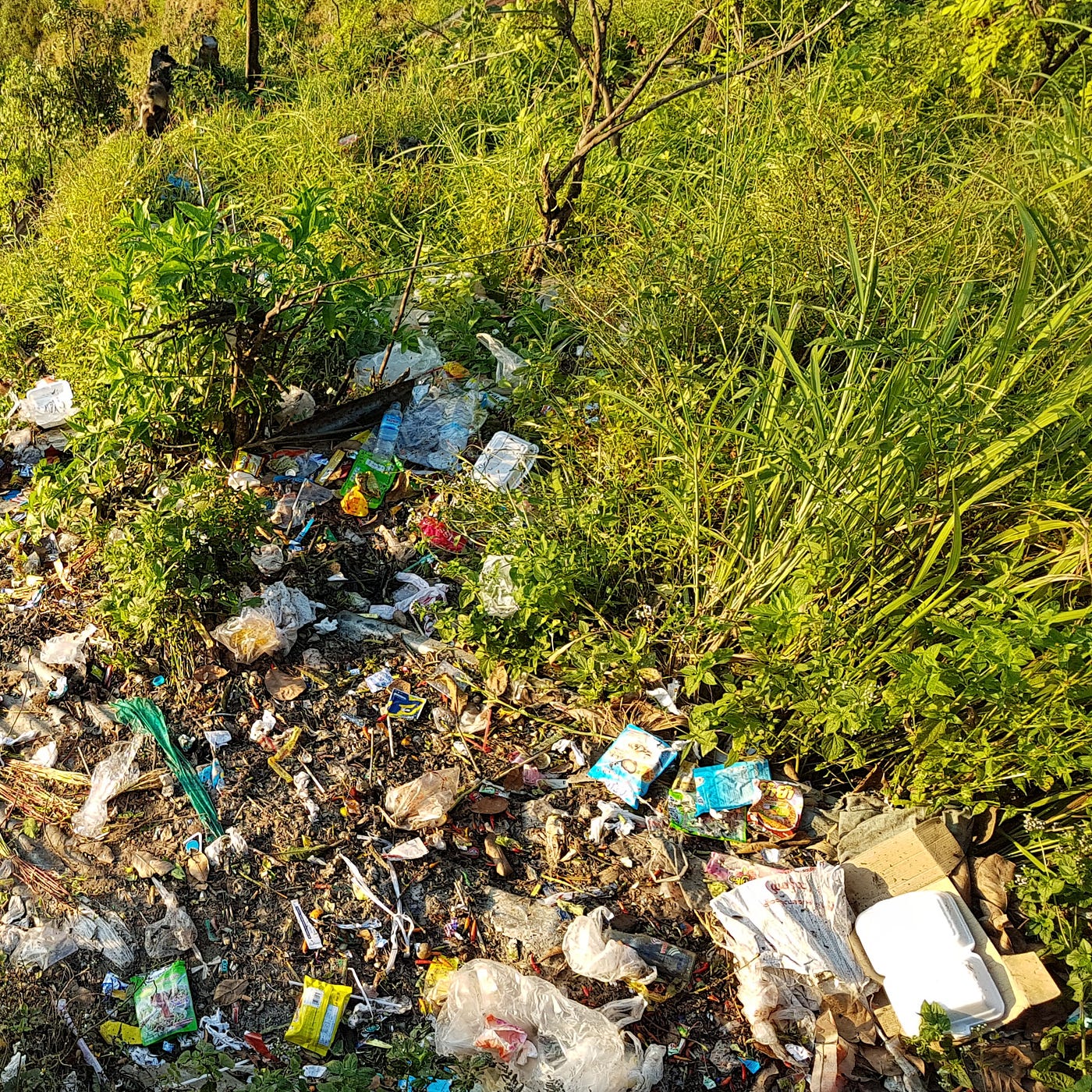
The people living next to the railroad tracks around Yangon lived in bamboo shelters on a land fill. On the other hand, the new rich children amused themselves in the oversized yacht club in Ngwesaung.
Ngwesaung beach was itself a mixed experience. First of all, the whole beach front was privatized. We are used to beaches that are easily accessible and nice to walk along. Where one can stop by a bar, rent a sun lounger, etc. This was not at all our experience in Ngwesaung.


In the nicer luxury resorts, the pool area is equipped with fancy furniture, and the pool basin itself is styled in organic forms. Very appealing. The terraces were green, well watered, and significantly elevated from the sand beach. All of this made the look onto the ocean from under an umbrella very enjoyable — and instagramable, certainly.
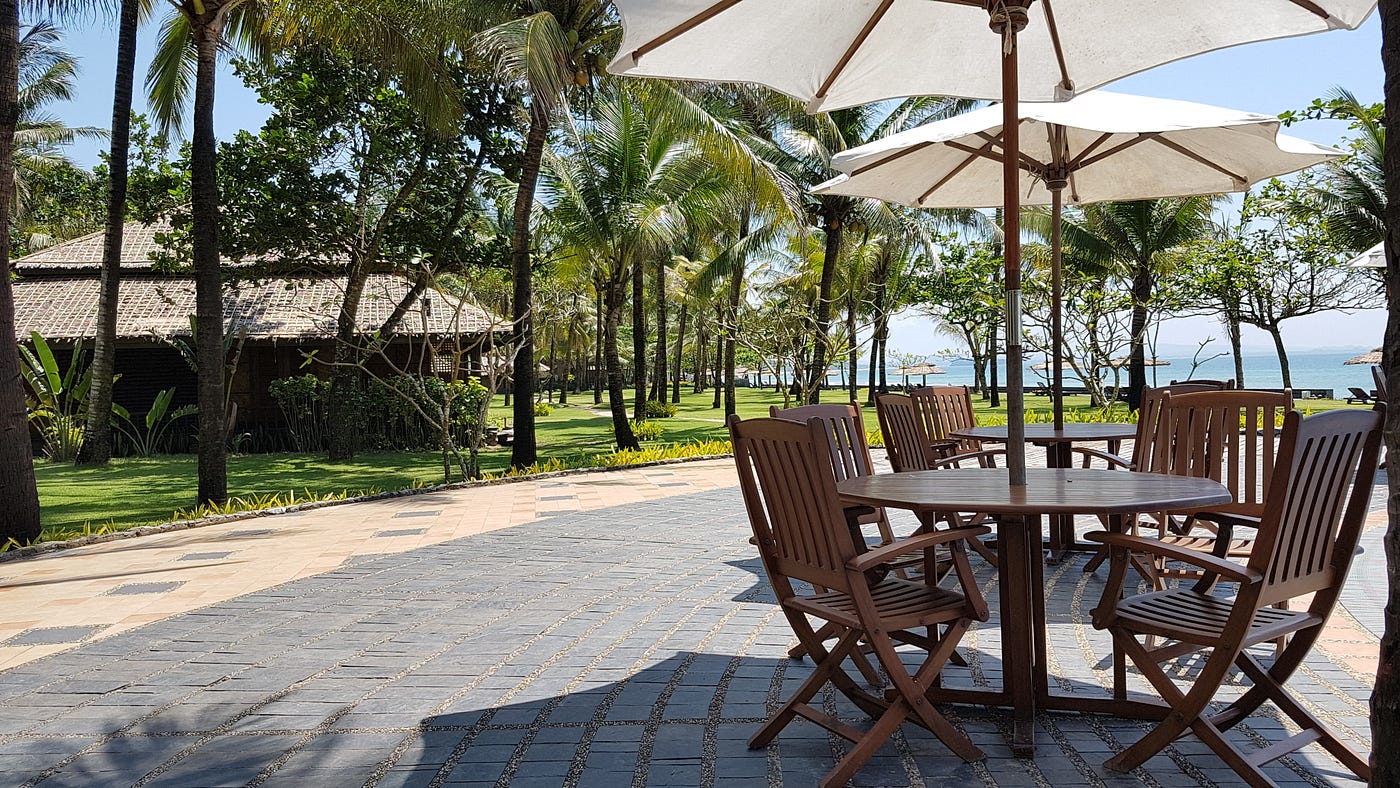
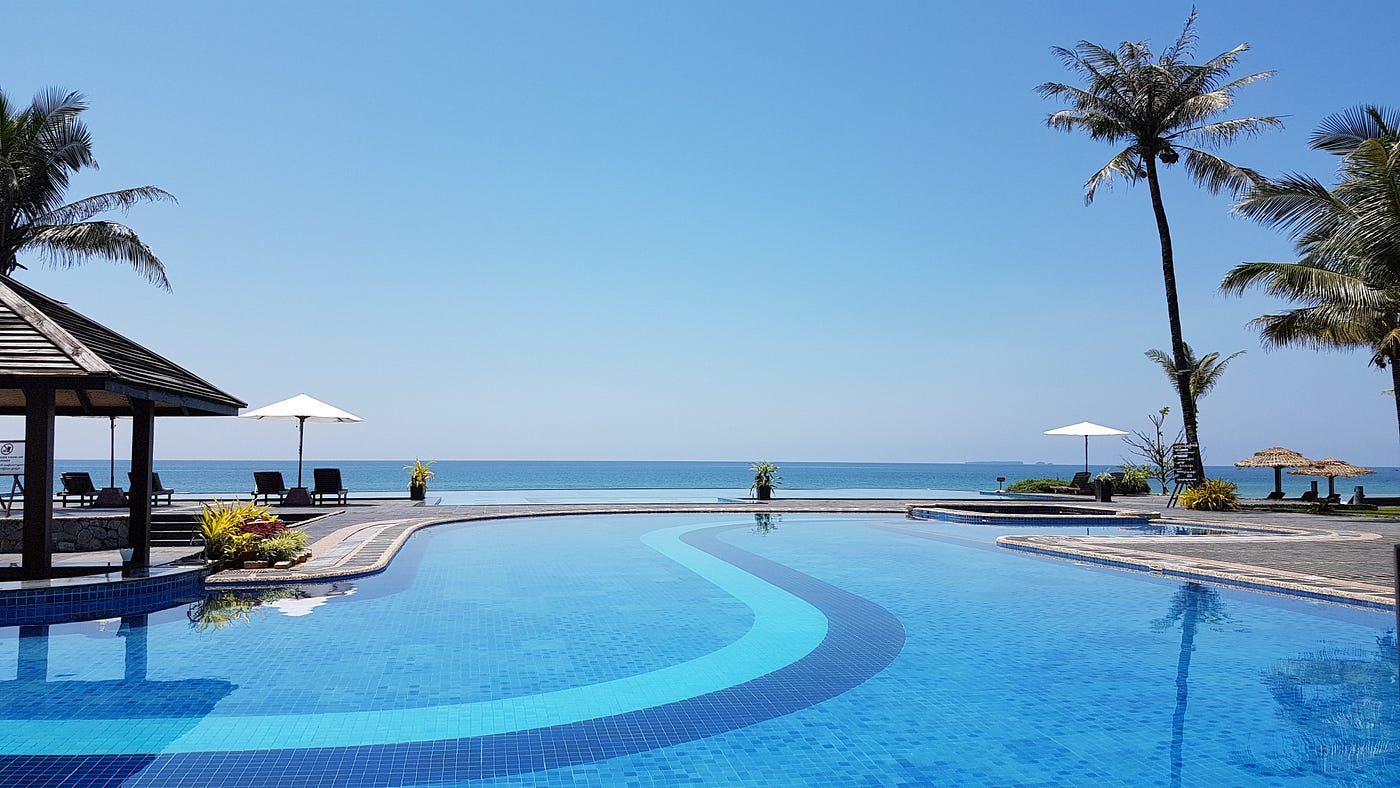
What you don’t see from the perfectly arranged terrace is the waste on the beach. The luxury resorts count on the fact that their guests won’t go down to the beach. Because there, there are the rests of the construction material they didn’t quite need.
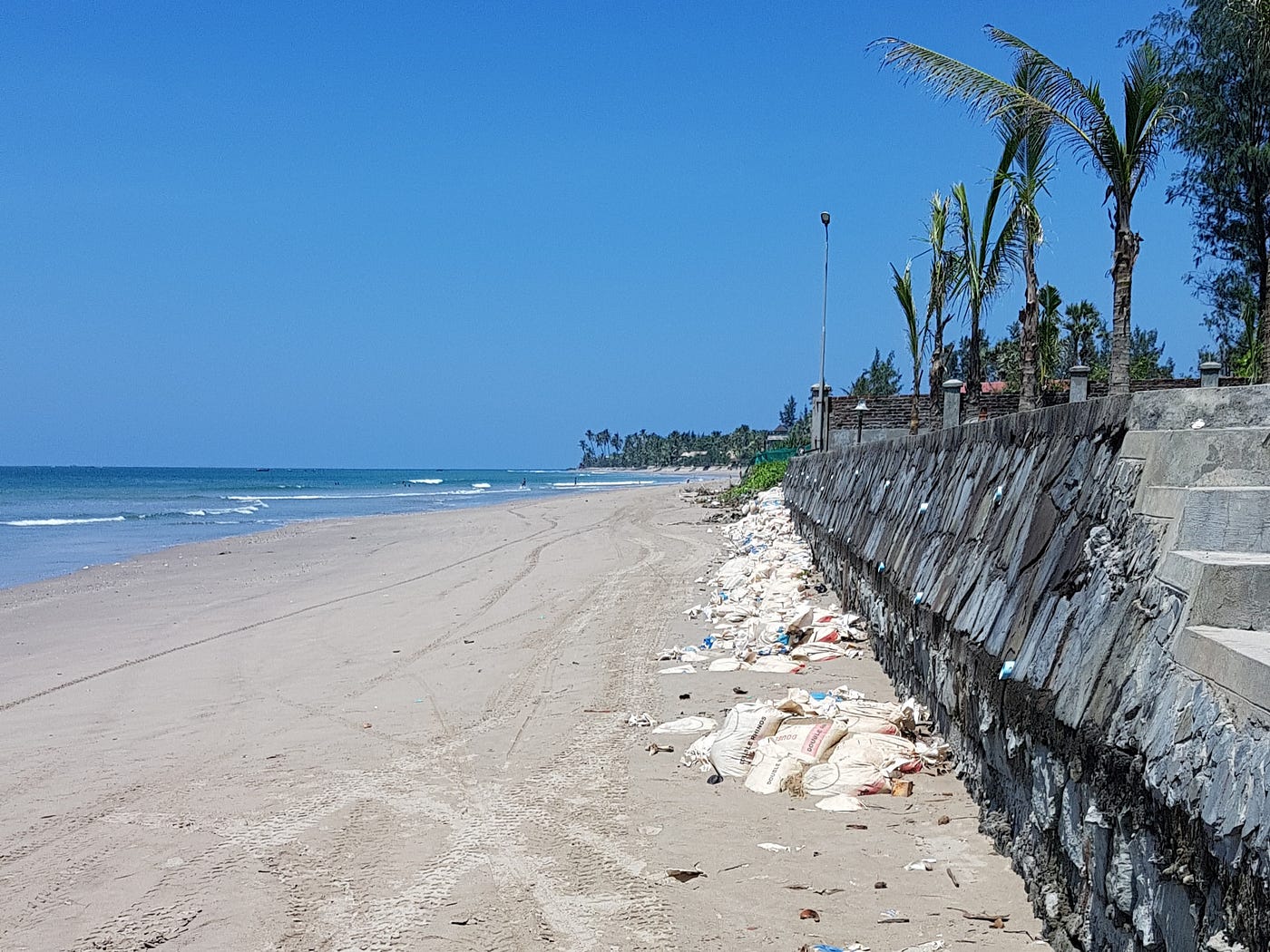
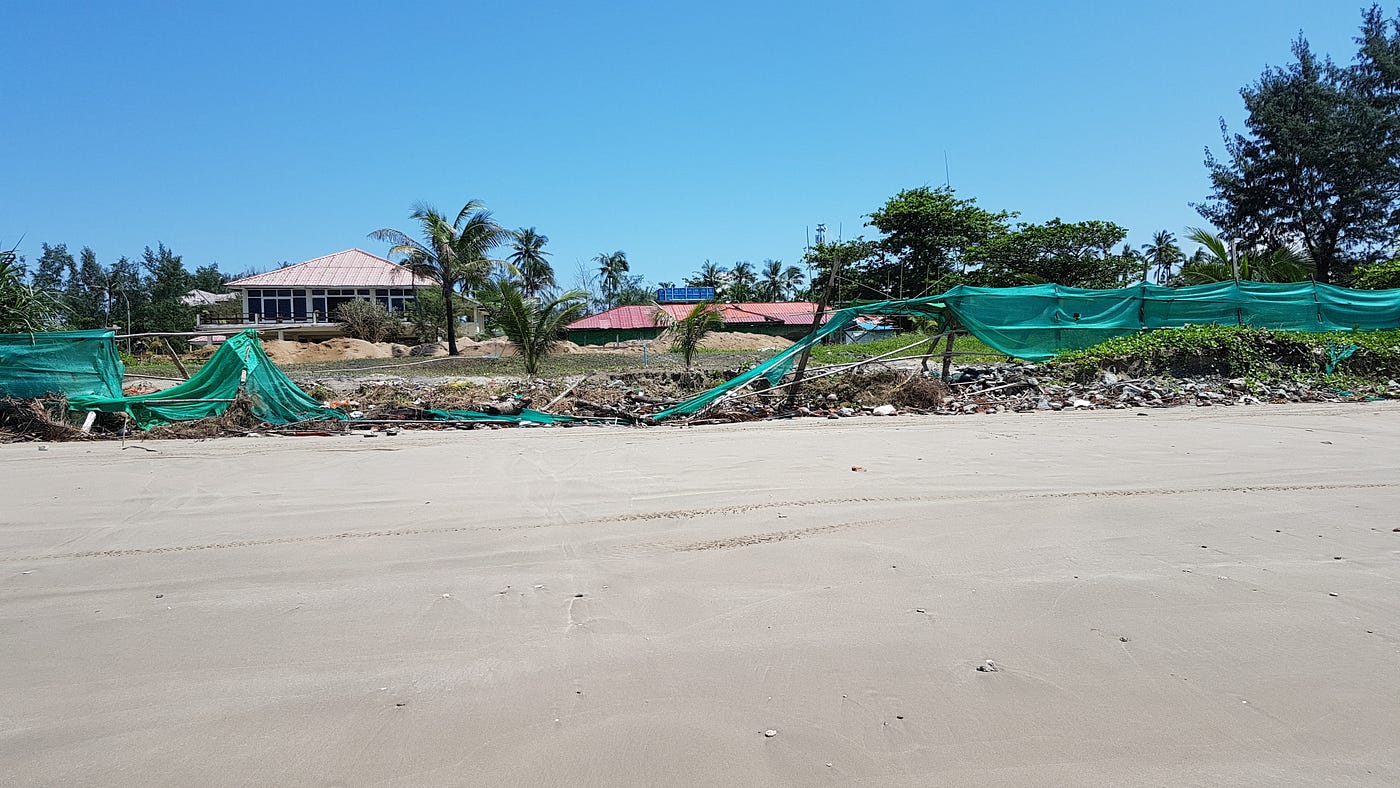
The beach itself was in fact accessible and everyone can walk on the sand. For the poor people who can’t afford to (or aren’t willing to…) pay a resort, there are stairs from the few roads leading to the beach. But there are no small bars or shops. And as mentioned, the sand part was not that interesting or beautiful: waste was laying around in all corners.

Waste treatment is an unsolved problem in Myanmar as a whole. On one side, there is the everyday behavior of the people. Train passengers eat something packaged; then throw the package through the window. A bus collecting the waste in a large plastic bag; only to then, during a convenient stop, throw the collected waste through the front door (not a frequent experience, but it did happen).
On the other side, the (official?) waste disposal strategy is to put everything on a pile and then set that on fire; in the open. The slowly burning flame appears inefficient and since nothing is filtered, probably also toxic. And so, every evening the people take their trash, assemble it on a pile and set it on fire. Depending on the region, the resulting smoke columns look nice on sunset photos. But then later that same smoke burns in the eyes when heading back to the city to eat something.
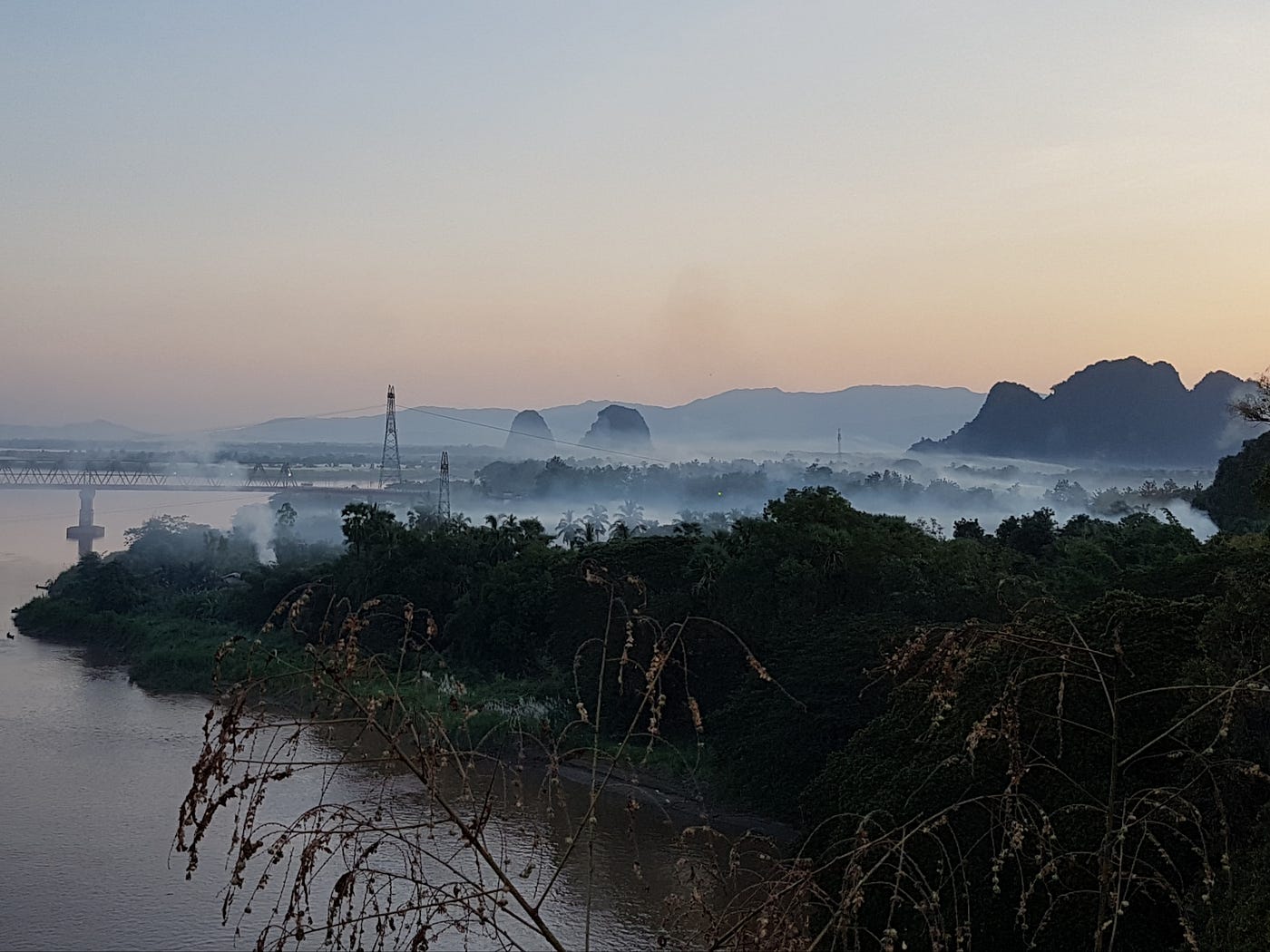
Along the rail road around Yangon they appeared to have tried an alternative waste management strategy: land fill. But — if indeed the official strategy — they didn’t bury the waste deep enough as even the poultry and simple erosion dug out plastic bags from just beneath the surface. Furthermore, people try to plant gardens on top of this land fill. The image of people living on a land fill, in contrast to the luxury resorts on the beach, brought the wealth inequality in this country really home for me.

The plastic on the side of the road then got picked up by the dogs in the hope of finding some edible rests. In the mountains of Hpa-An it’s the monkeys that feed off the waste.

The problem with feeding off human convenience food is that this is way too salty (for us humans as well, but we can find filled water bottles to quench the thirst). We’ve seen a monkey walking from empty water bottle to empty water bottle, holding each one up to its head in an attempt to drink. But empty water bottle means thirsty monkey (or so goes our interpretation, maybe it was looking for booze instead, we’ll never know for sure).
We definitely hope Myanmar is going to allocate some of those tourist dollars into their waste treatment; from education, to collection, to efficient burning, etc.
Traffic and displacements
The bus is the vehicle of choice for long distances. Myanmar is first and foremost developped along the highways. The busses (for tourists) are recent and comfortable. There are several rest areas along the highway; most of which are huge, have toillets with running water, and freshly cooked meals. The stops are usually 30min (important to know, because while it’s always the same duration, the bus drivers don’t know enough English to explain the logistics to foreign travellers…).
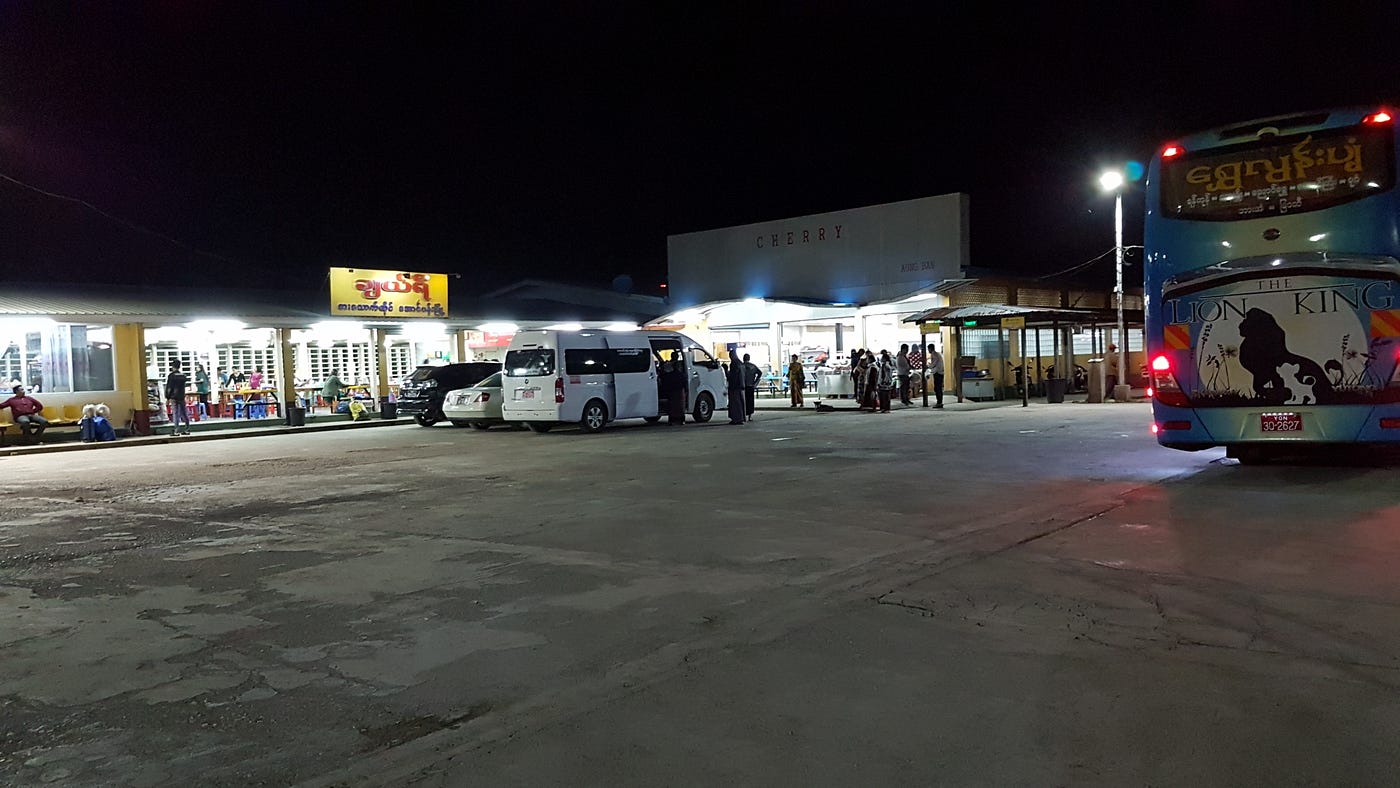
For local distances, in Yangon, the bus network is well developed. Some of the hostels have free colored maps at disposal. Those show which bus goes and stops where, so that one can navigate through the city. This option costs about 10% of a taxi, without any downside regarding time.
Outside of Yangon, for local distances one best rents a scooter. Though, this … is a whole other level of experience and excitement. See also our beach ride in Ngwesaung.
Broadly speaking, there are rules on the road. It’s just that these rules aren’t all that easy to decipher for a western tourist.
To start with an easy rule, in Myanmar traffic generally drives on the right side. Except if that is inconvenient, then you can drive in the opposite direction up to an intersection, from when on the right side is convenient again. Getting through an intersection however, is a whole other story.
First of all, in Mandalay many intersections are equipped with traffic lights. Yet, most of those were out of order and remained black. The few lights that worked were mostly respected. Unless when a large enough crowd took the collective decision that they have waited for long enough and it’s now their turn to drive.
Again, there are rules. In this case, if you’re inside the crowd: follow it. The mass will protect you (or crush, if you don’t comply). If you’re on collision course coming from an adjacent direction for which the traffic light showed green: honk, keep your line, do not yield.
It’s a big game of chicken, and you’re not supposed to back down. Seriously though, noone expects you to yield. Hence, if you stop, your unexpected behavior will likely cause an accident. Keep in mind though, given this is a game of chicken, the other side won’t back down either. They too will honk, keep their line, and will not yield.
This brings us to the large intersections with the traffic lights turned off. Again, there are rules. But for me, first and foremost, it looked like a movie which starts with the disclaimer “the following scenes are performed by professional stunt drivers on closed roads, do not attempt at home!”.
Problem is, I’m not a professional stunt driver, and the roads are anything but closed off. Luckily I’m far from home, I guess. So here’s the drill: ignore everything you’re used to when driving in the western hemisphere.
On foot, while crossing a busy road we took cover behind local pedestrians plowing the way free.
On scooter, when approaching a busy intersection, I usually would slow down, get enough distance from the vehicle in front of me — to be able to break without a crash, if needed (especially when driving a rental scooter with inefficient breaks).
Not so in Mandalay! Instead, I tried to go with the same strategy as on foot. Hence,when approaching an intersection, I had to spot a local who wants to go the same direction as me, get in their shadow, and adapt my speed to theirs. There are rules to cross the intersection. I just don’t understand them. But the local does. Or so I hope.
But. To spot a local whom I could use as a human shield — and to bring myself in their shadow — I typically have to accelerate to catch up with them. And that right before crossing the busy road! YOLO. That’s counter intuitive to the traffic rules I’m used to.
Yet, here is the one big rule to follow in Myanmar traffic: try to be an as boring and an as predictable traffic participant as possible. The traffic itself is exciting enough. No need to add innovation from your side!
This means, when crossing the road on foot, never step backwards; move forward, and if you can’t: stop. But at no instance are you supposed to step backwards. That would be an unpredictable move, with a ticket to the hospital.
When on scooter, follow the flow. Do whatever is needed to follow the flow. Don’t stop, unless the flow dictates to do so. Seeing all of these conventions in action, I find it fascinating how efficient traffic flow can be.
A start from a red light, surrounded by all other scooters feels surreal. It’s like playing Mario kart, only in real life, at considerable speed. The traffic lights often display a countdown until when the lights change (which enforced my Mario kart impression towards the 3-2-1-go!). And once again, playing Mario kart in the comfort of one’s home, or even karting in a closed off circuit, are safe activities. The mass start with scooters from a red light is anything but a closed track, and the speed is very much real. Being an adult is so much more fun than whatever I could have imagined while growing up!
Apart from renting your own, on the road, scooters are generally king. I guess it’s a natural consequence of the economic development state of Myanmar, that the people here mostly do everything by scooter and motorbike. Cars are still somewhat rare, and so are bicycles.
Nonetheless, as an outside observer I find it fascinating how much stuff people transport on scooter. From regular grocery shopping with husband, wife, and the two children all on the same bike; to pressurized gas bottles strapped down with an elastic; to chickens attached upsidedown with their feet on a wooden beam; to even four goats stretched over the back seat and their legs tied down to the frame of the backwheel; to a scooter on a scooter. Everything is transportable by scooter!

The scene with the goats was hilarious — for me as a neutral observer, horrible for the goats themselves. Our bus stopped at a highway stop for lunch and toilet break. While observing the scenery and stuff they sold on that stop (fried bats, for example), a motorbike approached from the distance.
But this motorbike was accompanied by an additional sound beside the engine noise: it turns out, one of the four goats was particularly discontent with its strapped down situation. So it used the little mobility it had left to lift its head and screamed the whole way — or at least the few 10s of meters to cross the reststop.
People, religion, and cultural differences
In Myanmar, everyone is very nice and helpful. The prices of the stuff is often written down and the same (low!) price applies for locals and tourists. The smaller restaurants without an english menu (or simply no menu at all) appear to be proud of the fact that a western tourist decides to come and eat in their place, so that they don’t feel the need to announce fake prices. “I’m proud of the food I make, and this is the price. Not more, not less.”
This general notion I experienced as very agreeable. And I guess this notion is what I’m most afraid about that will be lost in the next few years as Myanmar develops further and moves closer to its neighboring southeast asian countries.
So far only taxi drivers are in fantasy price land. Those don’t mind asking for the same price to get you from the bus station to the hotel 5km away, as what you’ve just paid for the bus drive the whole night and across half the country. And, unfortunately, just like in the other southeast asian countries, the taxi drivers understood that tourists will eventually pay those fantasy prices if everyone sticks to these agreed upon prices.
Religion is omnipresent in Myanmar. On the one hand there is a huge historical legacy with padogas, stupas, and buddha statues everywhere. On the other hand, those historical buildings are in active use and people visit to meditate/pray in/at them. Furthermore, the Buddhist flag is waving everywhere; more than anything else.
Some of the religious aspects appeared very silly (meaning, I don’t understand the practice). For example, in some of the large temples they have a live camera broadcasting of a Buddha statue. Noted, this statue doesn’t move, a still (printed out) image would do just as much. But no, it’s a live video feed (one can see some changes in the reflections of the lights as people walk by).

Overall religion is lived in positive harmony with their lives. I’ve seen other places (Bali comes mostly to mind…) in which religion was more crippling the people (they of course wouldn’t agree with my point of view) than to enhance their lives. In Myanmar, from what I can tell, religion was well integrated into their daily lives.
We got invited to join an english speaking class. This allows the students to practice with foreigners. Overall the conversations were interesting. Every now and then, the cultural differences got apparent. There were moments in which they asked us about something that we haven’t ever thought about, while for them it is their daily bread (or rice, for that matter). Equally, they didn’t understand some of our questions because how could it be any different?
A simple example was about rice: they didn’t want to believe me that there are countries which don’t cultivate rice. But, importing all the rice must be very expensive!? I explained that the people in those countries don’t eat rice every day. Now, this was a concept they had a hard time to digest.
Also along those lines, they had a hard time to imagine that in “industrialized” countries the agricultural sector employees barely any people. For them, all the development that is going on regarding tourism etc. will obviously always be dwarfed by the labor intensive rice fields. Hearing such points of view was very interesting.
Generally, the people in Myanmar are inquisitive, curious, and eager to learn. According to the people we could interact with, they see tourism as something positive. Tourism brings in money, and generally helps to improve the living conditions — except the Chinese tourists, who are seen as rude, loud, disrespectful, cheap, they pollute, (long list of negative sentiments…).
A behavior that surprised me to see in an asian country was the amount of public displays of affection. There are several young couples in the parks in close physical contact. I haven’t seen them kiss in public. But physical contact in public seems normal. At the same time, they’re still somewhat shy about it, so I’m still not sure whether it’s ok or not. Though, public parks aren’t a clever hiding place for couples who wouldn’t want to be found out.
Summary
Myanmar is an amazing travel destination, rich in landscape, people, and experiences.
